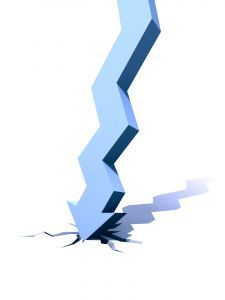| Home | About | Archives | RSS Feed |

@theMarket: Now What?
 Unless you have been living in a vacuum, you are keenly aware of the stock market's freefall. Panic is in the air and rumors are swirling around the Street's trading floors. It is time for investors to step back and take a breath.
Unless you have been living in a vacuum, you are keenly aware of the stock market's freefall. Panic is in the air and rumors are swirling around the Street's trading floors. It is time for investors to step back and take a breath.
If you are worrying about your retirement accounts, don't. This is not 2008-2009. Much of what is going on in the markets is a result of conjecture, not facts. No one knows if we are going into another recession. No one knows if Italy is going to go bankrupt, no one knows the future. At most, we can only make educated guesses.
Let me first admit that I was definitely wrong last week when I posed the question "Buy or Sell" in my column. I advised readers to hold onto their investments. Like many others, I was expecting a rally in stocks after the successful passage of a debt-limit increase. Even though I expressed my deep concerns over the weakening of the economy, I was caught like everyone else going the wrong way when the markets dropped through the floor. That said, I believe it is too late to sell and, if I do, I will wait first for a bounce.
Selling a market already down 12 percent in 10 out of 11 days is not a smart move. We are close to, if not already in, that zone of capitulation where panic takes over and investors want out at any price. Thursday was over a 95/5 day during which 95 stocks were sold for every five purchased. The New York Stock Exchange Index is so oversold that it registers a minus-2 standard deviation (SD). These are all signs of a near-term bottom.
My friend John Roque, technical strategist over at WJP Capital Group, indicates that when stocks are this oversold, a relief rally is not far behind. In 100 percent of the cases over the last 30 years where a minus-2 SD occurred, the markets have bounced anywhere from 2 percent to over 10 percent within two weeks. Three months later, the same markets gained 3.6 percent to 34 percent. So the odds are in your favor that selling now would be a losing proposition.
"OK, I wait for a bounce," says a client from Becket, "then what?"
That depends. Many times after a relief rally (sometimes called a dead cat bounce) the markets return to, at, or near the lows before moving higher. At other times, there is a week or two of pause before markets resume an upward climb. Last year, the S&P 500 Index lost almost 18 percent and then rallied straight up with no retest. It could happen again but we will need to get the bounce first before guessing at its durability.
The reason this correction feels so different from last year's is the compressed nature of the decline. What took four months to accomplish in 2010 has taken only 11 days thus far this year. In some ways, a short sharp correction is better than a drawn out death by a thousand cuts kind of correction, although both are painful.
So here's my game plan: stay invested, wait for the bounce, when it occurs sell some of your most aggressive investments and see what happens. If we retrace, buy at or close to the bottom. If we continue to climb, the worst that can happen is you miss a few percentage points of gains. But remember, preserving principle is your No. 1 concern. Profits should come second.
Bill Schmick is an independent investor with Berkshire Money Management. (See "About" for more information.) None of the information presented in any of these articles is intended to be and should not be construed as an endorsement of BMM or a solicitation to become a client of BMM. The reader should not assume that any strategies, or specific investments discussed are employed, bought, sold or held by BMM. Direct your inquiries to Bill at (toll free) or e-mail him at wschmick@fairpoint.net . Visit www.afewdollarsmore.com for more of Bill's insights.
| Tags: crash, bottom, dead cat bounce |

